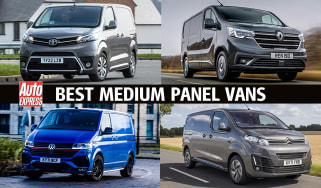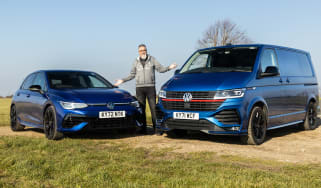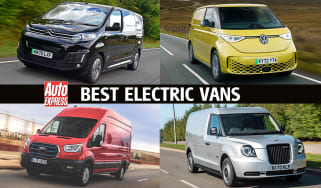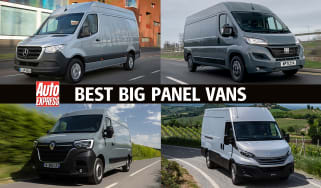Can I drive a van? Van driving licences explained
So you've got a licence to drive a car, but are you also able to drive a van? Our practical guide explains the ins and outs of UK driving licence categories
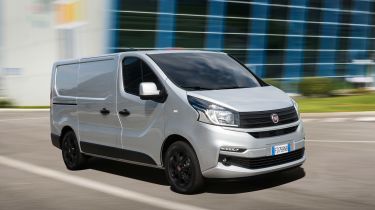
While most everyday jobs are manageable with a car, there are some that only a van can handle but the driving licence requirements associated with larger vans are slightly different to what you need to drive a car. Here we'll explain which vans you can drive on your licence.
Whether you plan to hire, borrow or even buy a van, the idea of driving one may seem intimidating due to their size and bulkiness. However, thanks to huge advances in technology, most modern vans aren’t much different to drive than a large MPV or SUV. There are a number of smaller car-based vans on the market, too, such as the Ford Fiesta Van.
Whatever you need to drive a van for, whether to save money when moving home, for large trips to the tip, or even for business purposes, it is important to do your research first. The first thing you need to know is whether your driving licence allows you to drive a commercial vehicle. While the simple answer is that a standard car licence allows you to drive most vans, there is a level of complexity to deal with if you're also going to be towing, or if the van you're driving is above a certain weight. Here we guide you through the licence categories and what you need to do to meet certain criteria.
Licence requirements
If you possess a full UK driving licence, this not only allows you to legally drive cars but certain other types of vehicle too. On the front of your plastic photocard licence, the row of letters at the very bottom are codes, showing what vehicles your licence allows you to drive.
This list of codes is repeated on the reverse in a table, with start and end dates for each category, along with small graphics representing the vehicle that each category refers to. The current vehicle classifications were revised in November 2013, and cover the following classes:
- AM - Moped
- A1 - Small motorcycle
- A2 - Medium motorcycle
- A - Full motorcycle
- B1 - Four wheeled light vehicle
- B - Car
- C1 - Medium sized vehicle
- C - Large goods vehicle
- D1 - Minibus
- D - Bus
- BE - Car with trailer
- C1E - Medium sized vehicle with trailer
- CE - Large goods vehicle with trailer
- D1E - Minibus with trailer
- DE - Bus with trailer
- p - Moped (50cc)
- q - Moped (25km/h)
- f - Tractor
- g - Roadroller
- h - Tracked vehicle
- k - Mowing machine
If you've passed your car driving test, then the 'B' line on your licence will have dates next to it indicating when the test was passed, and when the category expires. In the case of the B licence, this will be the day before your 70th birthday, which is the first time you'll need to renew your licence to keep driving for another three years.
You'll also have the same range of dates in line 'B1'. That means you can drive a four-wheeled light vehicle weighing up to 400kg, or 550kg goods vehicles. That covers microcars, such as those models built by Aixam and Microcar, as well as the Renault Twizy.
As for vans, the vast majority are covered by the 'B' classification, the same as cars, so you are fine to drive a basic Ford Transit, Vauxhall Vivaro or any of their contemporaries.
One crucial thing you need to be aware of is a van's Maximum Authorised Mass (MAM). This is the maximum weight of any vehicle you can drive if you have a 'B' licence, and it must be no more than 3,500kg (3.5 tonnes). While smaller versions of the majority of vans for sale in the UK come in below this limit, some of the biggest versions go over it. That's when you could get into trouble, because if you drive a vehicle with a MAM of over 3.5t without the required C1 licence, you could face penalty points, a fine and even a court summons if you're caught.
Vans over 3.5 tonnes
Your standard driving licence is the first part of the DVLA’s staging process, and automatically awards you a provisional licence to drive a car or van up to 3.5t with a trailer up to 750kg, or with a trailer over 750kg if the combined weight isn’t more than 3.5t. If you want to drive anything larger you will need to apply for another stage in the licensing process, if you passed your test after January 1997.
Those who passed your test after 1 January 1997 will need a C1 licence to drive any vehicle with an MAM in excess of 3.5t. If you passed your car test before then, you are allowed to drive commercial vehicles up to 7.5 tonnes MAM with no extra licence, but not if you're driving one as part of your job. If you do drive vehicles in the 3.5t to 7.5t MAM weight range for work, then you need to take a professional Driver Certificate of Professional Competence (CPC).
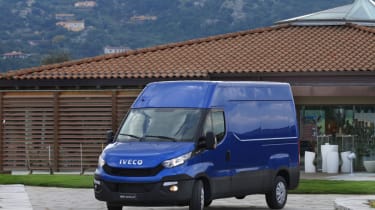
Alternatively fuelled vans
In 2019, the Department for Transport announced as part of its Road to Zero Strategy that category B driving licence holders would be allowed to drive alternative fuel vans (including EVs such as the Mercedes eSprinter, Vauxhall Vivaro-e and Citroen e-Dispatch) with a kerb weight of up to 4.5 tonnes. The extra weight allowance is a result of plug-in hybrid and electric vans having a higher unladen weight than traditionally powered ones because of the heavy batteries.
Category B licence holders who wish to drive these vans are required to complete five hours of additional relevant training from one of the two Government-approved LGV (light goods vehicle) training providers before getting behind the wheel.
Hiring a van
If you want to hire a van, it's important to plan ahead and take some of the previous information with you so that you get the right van for the job.
First, work out what you want the van for. It might be tempting to get the largest van possible, but beware that loading it up with a number of heavy items could quickly put the van over its MAM limit, making it illegal to use without the correct licence. If you're stopped and your van is found to be over the limit, you will be liable for any fine or court action, because the small print in the rental agreement will likely absolve the hire firm from any responsibility. If you know what you're carrying is going to be heavy, it might be better to get a smaller van that can't be excessively loaded, and then do more than one trip if that's viable.
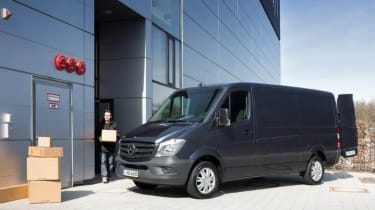
Take a look at the small print of what's covered by the hire companies' insurance. An unlimited mileage deal may work out a little more expensive, but that means you don't have to worry about paying excess mileage charges. It may also be worth paying a collision damage waiver to ensure you don't get stung financially should you be involved in a prang.
Check the van over for damage inside and out before driving off. If you spot anything, then inform the hire company and get them to sign a waiver to verify that the damage was present before you took the van away, otherwise you may have a tough time proving it wasn’t caused by you upon its return, likely resulting in an extra charge to cover the damage.
When returning the van, leave it as you found it. Make sure the load area is at least swept clean, and that the cab is free of rubbish. Check the agreement about fuel use, because if the van was full of fuel when you took it, you may be expected to refuel it, or face another charge for the fuel you have used.
If you’re looking to invest in your own van, click here to learn about van finance.


